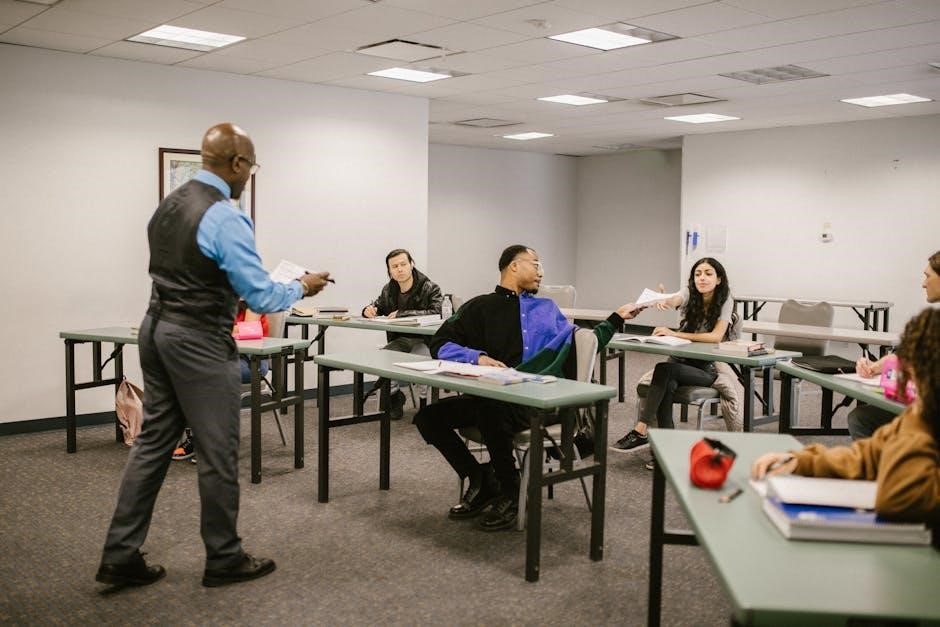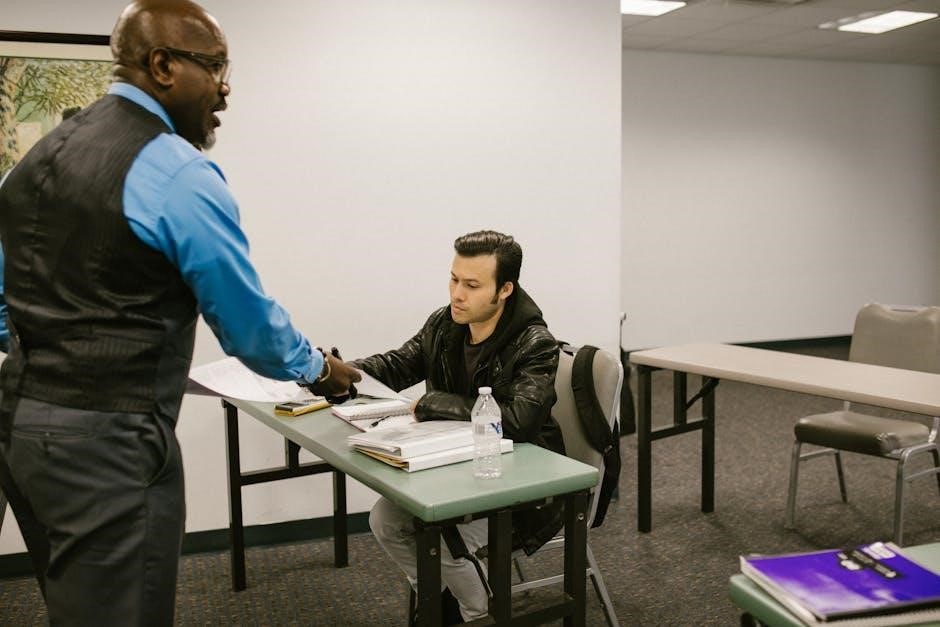Dribbling is a fundamental soccer skill that involves controlling and maneuvering the ball with precision. It enhances ball control, confidence, and creativity on the field, making it essential for all players to master this technique.

1.1 Understanding the Importance of Dribbling
Dribbling is the foundation of individual skill in soccer, enabling players to control and manipulate the ball effectively. It allows players to beat defenders, create scoring opportunities, and maintain possession under pressure. Mastering dribbling boosts confidence, enhances ball control, and separates average players from exceptional ones. By developing this skill, players can navigate tight spaces, change direction quickly, and execute precise movements, making it a vital component of both personal and team success in the game.
1.2 Basic Dribbling Techniques for Beginners
Mastering basic dribbling techniques is essential for developing ball control and confidence. Start with stationary drills, focusing on small, quick touches using the inside, outside, and sole of the foot. Practice shifting weight and maintaining balance while keeping the ball close. As skills improve, introduce movement, encouraging players to dribble through cones or around obstacles. These foundational exercises help build coordination, precision, and the ability to manipulate the ball effectively in various game scenarios.

Fundamental Dribbling Skills
Fundamental dribbling skills focus on ball control, balance, and precise footwork. Players learn to use the inside, outside, and sole of the foot to manipulate the ball effectively.
2.1 Ball Control and Close Dribbling
Ball control and close dribbling are essential for maintaining possession in tight spaces. Players should focus on using the inside, outside, and sole of the foot to make small, precise touches. Keeping the ball close to the feet allows for better control and quicker movements. Practicing stationary and dynamic drills helps improve balance and coordination. Emphasize staying low, with a wide stance, to maintain a low center of gravity and protect the ball from defenders.
2.2 Body Positioning and Balance
Proper body positioning and balance are crucial for effective dribbling. Players should maintain a low center of gravity with knees slightly bent and weight evenly distributed. This stance allows for quick changes in direction and better control of the ball. Keeping the body positioned between the ball and the defender helps shield the ball, while balanced movements ensure stability and precision when navigating the field.

Key Dribbling Techniques

Mastering essential dribbling techniques enhances a player’s ability to control and manipulate the ball effectively. Techniques like shielding, using fakes, and changing speed allow players to outsmart defenders and maintain possession. Proper body positioning and balance are vital for executing these moves seamlessly, ensuring confidence and precision on the field. These skills form the foundation for advanced dribbling strategies, making them indispensable for any player aiming to excel in soccer.
3.1 Shielding the Ball from Defenders
Shielding the ball is a crucial defensive technique that prevents defenders from winning possession. Players must position their body between the ball and the opponent, using their legs and arms to protect it. Keeping the ball close and maintaining balance allows for better control. Effective shielding involves anticipation, staying calm under pressure, and using different parts of the foot to dribble forward. This skill is vital for retaining the ball in tight spaces and advancing up the field confidently.
3.2 Using Fakes and Feints
Fakes and feints are deceptive moves that mislead defenders, creating space to dribble past them. Techniques like step-overs, inside cuts, and body feints confuse opponents, allowing players to change direction quickly. These moves require precise footwork and balance. Players should combine fakes with quick changes in speed and direction to maximize their effectiveness. Mastering these skills enhances a player’s ability to outsmart defenders and maintain possession in tight situations.
3.3 Changing Speed and Direction
Changing speed and direction is a dynamic dribbling technique that keeps defenders guessing. Players should practice accelerating and decelerating smoothly, then shifting direction using the inside or outside of their foot. This unpredictability creates space and opportunities to advance. Combining speed changes with fakes enhances effectiveness, making it harder for opponents to anticipate the next move. Mastery of this skill allows players to control the rhythm of the game and outmaneuver defenders effortlessly.
Dribbling Drills for Practice
Dribbling drills are essential for improving ball control and precision. From stationary exercises to dynamic cone drills, these practices help players refine their skills and adapt to game situations effectively.
4.1 Stationary Dribbling Exercises
Stationary dribbling exercises focus on ball control while standing still. Players use quick, light touches with both feet, keeping the ball close. These exercises improve coordination, balance, and precision. By practicing inside, outside, and sole taps, players develop mastery over the ball. Encourage switching feet and varying speed to enhance control and adaptability. These drills build confidence and lay the foundation for more complex dribbling techniques in dynamic situations.
4.2 Cone Dribbling Drills
Cone drills are excellent for improving precision and agility. Set up cones in zigzag or maze patterns, and players weave through them using both feet. Encourage quick changes in direction and speed. This drill enhances ball control, balance, and the ability to navigate tight spaces. By focusing on precise touches and dynamic movements, players develop the skill to maintain possession in tight game situations while improving overall dribbling technique and confidence.
4.3 Dynamic Dribbling Through Gates
Dynamic dribbling through gates involves navigating the ball through cones or markers with speed and precision. Players practice shuffling, cutting, and changing direction quickly while maintaining control. This drill mimics real-game scenarios, helping players develop the ability to beat defenders and create scoring opportunities. By incorporating dynamic movements, players enhance their ball control, vision, and decision-making under pressure, making it an essential exercise for improving overall dribbling proficiency and field awareness.

Advanced Dribbling Moves
Advanced dribbling involves mastering techniques like step-overs, feints, and rapid direction changes to outsmart defenders. These moves require precision, timing, and confidence to execute effectively in game situations.
5;1 Step-Overs and Inside Cuts
Step-overs and inside cuts are advanced dribbling techniques used to deceive defenders. A step-over involves faking a move with one foot while pushing the ball in the opposite direction. Inside cuts require quick footwork to change direction, creating space to exploit. These moves rely on balance, coordination, and misdirection to outsmart opponents effectively during a match, allowing players to maintain possession and create scoring opportunities. Proper execution enhances a player’s ability to beat defenders with precision and confidence.
5.2 Advanced Shielding Techniques
Advanced shielding techniques involve using the body to protect the ball while maintaining control and balance. Players learn to position themselves between the ball and defenders, utilizing their legs, arms, and vision to anticipate challenges. These methods allow for effective possession retention under pressure, enabling players to navigate tight spaces and outsmart opponents. Mastering shielding enhances a player’s ability to transition from defense to offense seamlessly, creating opportunities to advance up the field.
5.3 Combining Moves in Game Situations
Combining dribbling moves in game situations is crucial for outsmarting defenders. Players should master transitioning smoothly between techniques like step-overs, inside cuts, and feints. Reading the defender’s position and timing is key to executing effective combinations. By mixing speed changes, body shifts, and ball manipulation, players can create unpredictable paths. This adaptability forces defenders into making split-second decisions, often leading to mistakes. Practicing move combinations under pressure enhances game intelligence and unlocks scoring opportunities in tight spaces.
Age-Specific Dribbling Training
Dribbling training varies by age to suit developmental stages. Young players focus on basic control, while older players refine advanced techniques and game application. Tailored drills ensure progressive skill development.
6.1 Dribbling Drills for Young Players (Ages 3-5)
For young players, dribbling drills focus on fun and basic control. Activities like “Red Light/Green Light” and simple cone exercises help develop coordination. Using both feet, players practice keeping the ball close. Games with music or colorful cones make learning engaging. Emphasize staying low, using the inside, andsole of the foot. Positive reinforcement builds confidence, encouraging creativity and enjoyment of the game while mastering foundational skills.

6.2 Intermediate Dribbling Skills for Ages 5-8
For players aged 5-8, intermediate drills refine basic skills and introduce new challenges. Cone weave exercises and zigzag dribbling enhance agility and control. Emphasize using both feet and varying speed. Incorporate fun games like “Freeze Tag” to practice shielding and introductory moves like step-overs. This age group learns to balance ball control with movement, preparing them for more complex techniques while maintaining engagement and enjoyment of the game through structured, active play.
6.3 Advanced Training for Older Players
Advanced training focuses on refining complex dribbling techniques, such as feints, step-overs, and rapid direction changes. Players practice shielding the ball under pressure and executing moves in game-like scenarios. Drills like cone mazes and dynamic gate exercises simulate real defenders, enhancing speed and precision. Emphasize using both feet and incorporating fakes to outsmart opponents. This stage builds confidence and prepares players for competitive environments, blending creativity with tactical awareness to dominate the field effectively.

Incorporating Dribbling into Team Play
Dribbling integrates seamlessly into team strategies, enabling players to create scoring opportunities and maintain possession under pressure. It fosters dynamic play and enhances overall tactical execution in games.
7.1 Dribbling in Small-Sided Games
Small-sided games provide an ideal environment for applying dribbling skills in realistic match scenarios. These games, with fewer players and reduced field sizes, encourage quick decision-making, spatial awareness, and ball control under pressure. Players can practice using fakes, feints, and speed changes to outmaneuver opponents while maintaining possession and creating scoring chances. This format enhances game intelligence and transitions, making dribbling a natural part of team play.
7.2 Using Dribbling to Create Scoring Opportunities
Dribbling is a powerful tool for creating scoring opportunities by breaking down defenses and exploiting space. By using fakes, feints, and quick changes of direction, players can outmaneuver opponents, drawing defenders out of position. Effective dribbling allows players to penetrate defensive lines, create 1-on-1 situations, and deliver precise passes or shots. Combining vision with ball control enables players to identify and capitalize on scoring chances, making dribbling a key factor in offensive success.

Dribbling Games and Activities
Engage players with interactive dribbling games like Red Light/Green Light and Freeze Tag. These activities make practice fun, fostering creativity and control while maintaining engagement.
8.1 Red Light/Green Light Dribbling Game
Organize players in a line with their soccer balls. On the coach’s command of “Green Light,” players begin dribbling forward. When “Red Light” is called, they must stop immediately. This game improves ball control, reaction time, and listening skills. It’s an engaging activity for young players, fostering focus and fun while developing essential dribbling techniques. Ideal for ages 3-8, it’s a great way to introduce basic ball manipulation in a dynamic setting.
8.2 Freeze Tag Soccer Drill

In this engaging activity, one or more taggers attempt to tag players who are dribbling balls; When tagged, players freeze in place. A teammate can unfreeze them by dribbling through their legs. This drill enhances dribbling under pressure, spatial awareness, and teamwork. It’s an exciting way to keep players moving while improving their ball control and decision-making skills. Suitable for all ages, it combines fun with learning, making it a great addition to any training session.
